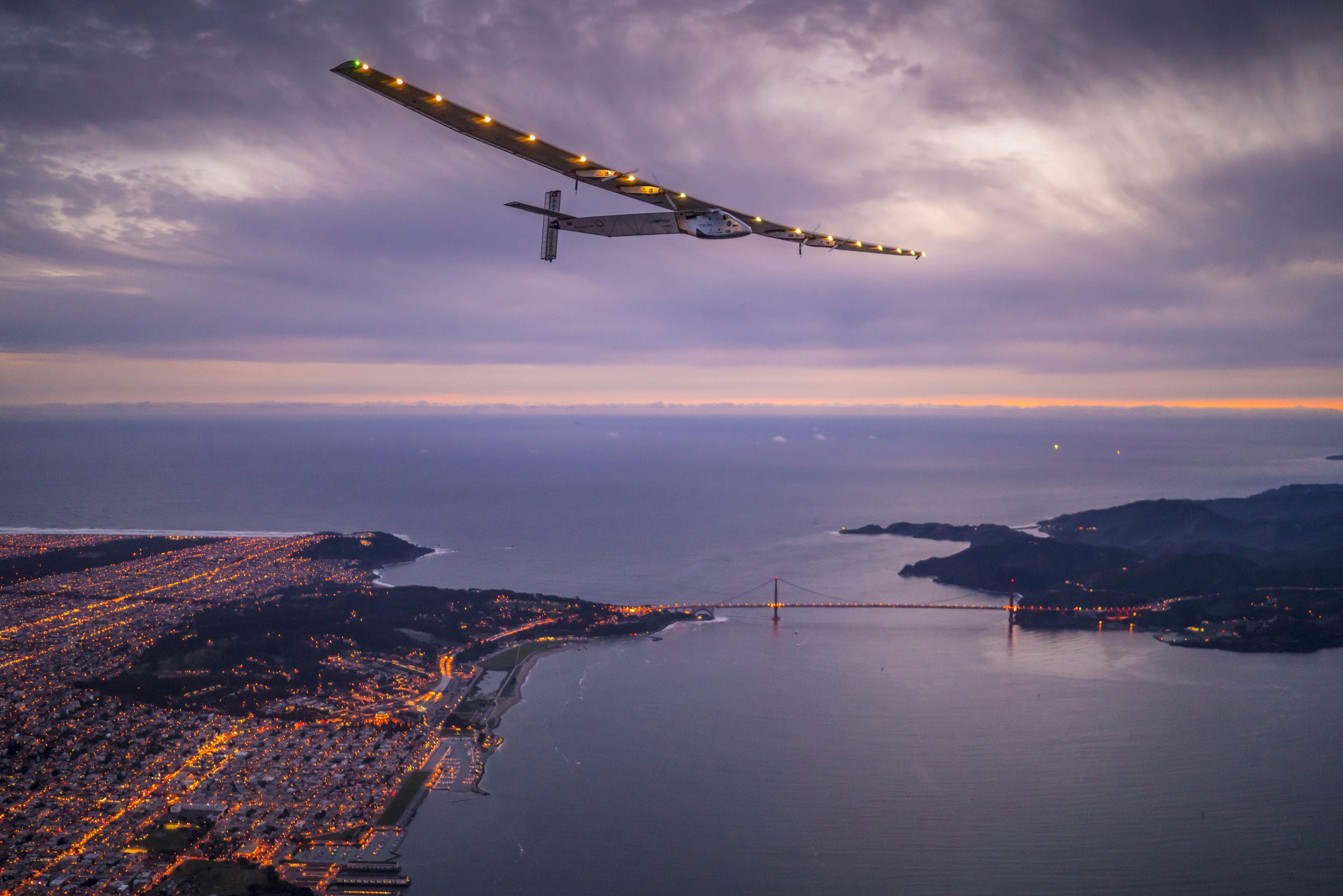
Los Angeles: A solar-powered airplane midway through an attempt to circle the globe departed northern California on Monday on the next leg of its history-making journey, a relatively short 16-hour flight to Arizona, the project team said.
The spindly, single-seat experimental aircraft dubbed Solar Impulse took off just after 5 am local time from San Francisco on a flight that will take the plane over the Mojave Desert before its planned arrival in Phoenix shortly before 9:30 pm.
Occupying the plane's tiny cockpit for Monday's trip was Swiss aviator Andre Borschberg, a co-founder of the project. He and fellow pilot Bertrand Piccard, also of Switzerland, are seeking to achieve the first round-the-world solar-powered flight, taking turns at the controls for each leg of the voyage.
The California-to-Arizona flight marks the 10th leg.
Borschberg was the pilot for the Japan-to-Hawaii trip over the Pacific last July, during which he remained airborne for nearly 118 hours, or five days and five nights.
That flight shattered the 76-hour world duration record for a nonstop, solo flight set in 2006 by the late American adventurer Steve Fossett in his Virgin Atlantic Global Flyer. It also set new duration and distance records for solar-powered flight.
But the feat dealt a setback to the Solar Impulse team. The plane sustained severe battery damage on the flight from Japan, requiring repairs and testing that kept the aircraft grounded in Hawaii for nine months.
Piccard completed the trans-Pacific crossing last month, reaching San Francisco after a flight of nearly three days, more than three times longer than the 18 hours it took Amelia Earhart to fly solo from Hawaii to California in the 1930s.
The biggest difference is that the Solar Impulse flies without a drop of fuel. The four engines of the propeller-driven aircraft are powered solely by energy collected from thousands of solar cells in its wings.
Surplus power is stored in four batteries during daylight hours to keep the plane flying overnight, allowing it to remain aloft around the clock on extreme long-distance flights.
The Swiss team hopes eventually to complete its circumnavigation in Abu Dhabi, where their journey began in March 2015 as part of campaign to bolster support for clean energy technologies.
In a precursor to their globe-circling quest, the two men completed a multi-flight crossing of the United States by solar power in 2013.